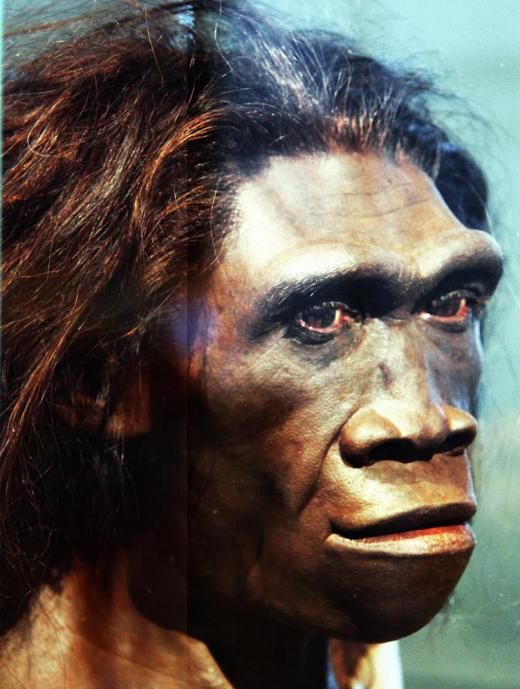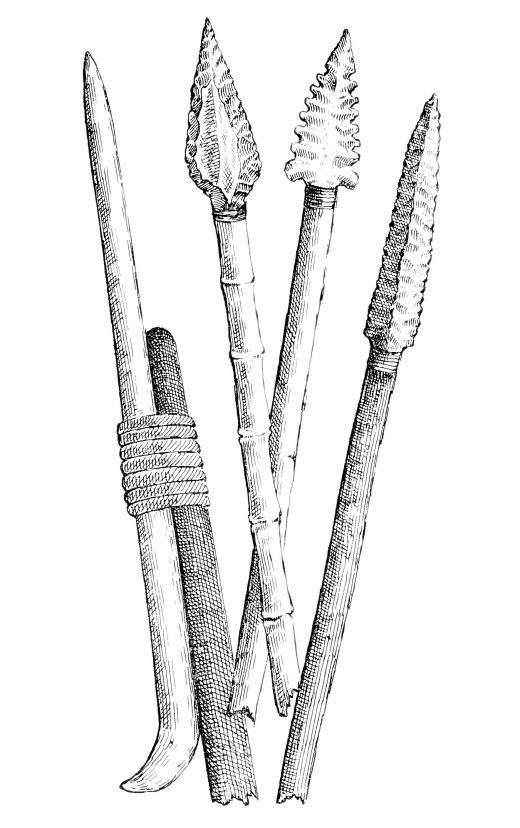What Was Homo Erectus Like?
 Michael Anissimov
Michael Anissimov
Homo erectus, meaning "upright man," lived from 1.8 million years ago, if the possibly related species H. ergaster is included, or 1.25 million years ago, if excluded. The species disappeared about 70,000 years ago, and is a member of the homonid family and the Homo genus, which includes modern humans. It was an intermediate form of the genus, however, falling between the first tool users, early Homo habilis, and present day Homo sapiens. Homo erectus is widely considered to be an ancestor of modern humans.
Researchers believe that Homo erectus displayed more humanlike characteristics than its predecessor Homo habilis, standing more upright and taller, at about 5.9 feet (1.8 m) instead of 4.2 feet (1.3 m). The species also had a larger brain, though still 75% the size of Homo sapiens. He had smaller teeth, less slope to his forehead, and developed more complex tools.

Homo erectus primarily used tools created in the Acheulean style, a type of stone tool industry. The Acheulean era of stone-tooling lasted from about 1.2 million years ago to about 500,000 years ago, although some primitive cultures have used such tools up until 100,000 years ago. This type of tooling is represented best by handaxes, chipped on both sides to serve as a more effective means of amplifying the effect individuals could have on his environment. Use of these tools allowed homonids to defend themselves against the largest predators for the first time.

Though he may have tried to control fire, such behavior would not have been typical for those in this species, appearing only near the end of his stay on Earth. Traditionally, the harnessing of fire is placed at around 100,000 years ago, only 25,000 years before the extinction of this species. Homo erectus was succeeded by H. heidelbergensis and H. neanderthalensis, who both displayed an increasing ability to make and use tools and generally take control of their environment.
The well-known Java man and Peking man fossils were members of the species.
AS FEATURED ON:
AS FEATURED ON:












Discussion Comments
I read an article the other day and it was talking about how scientists discovered Homo erectus fossils and tools on an island in Asia. They know that this was an island during the time Home erectus lived so it's really interesting how they got there in the first place.
I read that this island is too far away for anyone to swim to it so scientists think that Homo erectus might have used some sort of a sailing raft to get there. I think that's really cool. It means that Homo erectus were much smarter than we thought.
@ankara-- As far as I know, Homo erectus had a slightly smaller brain, but a thicker skull than us. They also had really wide hips. Their bodies were wider and more muscular in general.
I have no doubt that they were part of the human species though. They were hunters and gatherers, made and used tools, they used fire.
Some scientists say that their brains were developed enough to use language and others say that their footprints even match ours closely, and so does their stride. Homo erectus is definitely the ancestor of Homo sapiens and they were human.
I've seen pictures of reconstructed Homo erectus bones and pictures of what they would have looked like in real life. They don't look much different from us-- Homo sapiens. To me, they look like regular modern humans.
But some people argue that Homo erectus weren't human, that they were apes. Why do they say that? What are the differences between us and Home erectus?
Post your comments